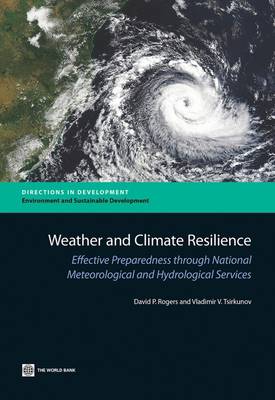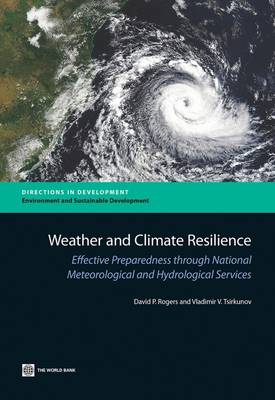
Bedankt voor het vertrouwen het afgelopen jaar! Om jou te bedanken bieden we GRATIS verzending (in België) aan op alles gedurende de hele maand januari.
- Afhalen na 1 uur in een winkel met voorraad
- In januari gratis thuislevering in België
- Ruim aanbod met 7 miljoen producten
Bedankt voor het vertrouwen het afgelopen jaar! Om jou te bedanken bieden we GRATIS verzending (in België) aan op alles gedurende de hele maand januari.
- Afhalen na 1 uur in een winkel met voorraad
- In januari gratis thuislevering in België
- Ruim aanbod met 7 miljoen producten
Zoeken
Weather and Climate Resilience
Effective Preparedness Through National Meteorological and Hydrological Services
David P Rogers, Vladimir V Tsirkunov
€ 27,45
+ 54 punten
Omschrijving
The importance of weather, climate, and water information is rising because of the need to minimize growing economic losses, serve more elaborate societal needs, and help countries adapt to climate change. Weather and Climate Resilience highlights recent World Bank experience and offers guidance on good practices that will help modernization efforts. Sustainable development hinges on the ability to copy with natural hazards and avoid the ensuing disasters that often befall a poorly prepared society. National Meteorological and Hydrological Services (NMHSs) play a vital role as a country's official source of warnings for weather hazards. Together with disasters managers, they play a critical part in reducing the adverse impact of hydrometeorological threats. In many developing countries, however, underinvestment in infrastructure and operations of NMHSs has left them with limited capacity to inform and warn. These countries are often disproportionately vulnerable to hydrometeorological hazards with many people living in areas exposed to floods, storm surges, extreme temperatures, drought and other dangers. Weather and Climate Resilience underscores the urgent need to strengthen NMHSs, especially in developing countries, and provides cost-benefit estimates of the return that countries can hope to achieve. It also offers a recommended approach that has been tested and implemented in Europe, Central and South Asia, and other countries. This book takes an important step in this process by increasing the awareness of development agencies and national governments of the role of World Meteorological Organization (WMO) and NMHSs in reducing the impact of hydrometeorological hazards and improving national economic performance. It synthesizes recent experiences of the World Bank and Global Facility for Disaster Reduction and Recovery (GFDRR), the WMO (World Meteorological Organization), and other development partners.
Specificaties
Betrokkenen
- Auteur(s):
- Uitgeverij:
Inhoud
- Aantal bladzijden:
- 152
- Taal:
- Engels
- Reeks:
Eigenschappen
- Productcode (EAN):
- 9781464800269
- Verschijningsdatum:
- 7/10/2013
- Uitvoering:
- Paperback
- Formaat:
- Trade paperback (VS)
- Afmetingen:
- 178 mm x 254 mm
- Gewicht:
- 290 g

Alleen bij Standaard Boekhandel
+ 54 punten op je klantenkaart van Standaard Boekhandel
Beoordelingen
We publiceren alleen reviews die voldoen aan de voorwaarden voor reviews. Bekijk onze voorwaarden voor reviews.









